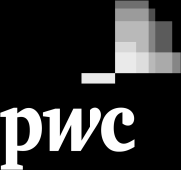
04.09.17
First and Last Leg
Benefit Evaluation Framework
Method of analysing
Evaluate the benefits of Devonport on-demand car sharing trial from 3
components:
- Fare revenue
Revenue collected from fare
- Road traffic reduction
Consider wider economic benefit travel time savings (including congestion reduction), vehicle
operating cost savings, crash cost savings, and environmental benefits (including CO2
reduction).
- Public transport user benefit
Public transport user benefit is based on the cost saving (difference between the willingness to
pay amount and the actual charged amount) and value from travel time saving for each user
2
Method of analysing
The benefit evaluation framework is based on SP9-New public transport
service given the following conditions are met:
-
Funding gap is less than or equal to $5 million over the first 3 years of operation
-
The new service will serve a geographical area that is not currently served by public transport
Although there is an existing bus service in Devonport peninsular, the uptake for the service is low. Moreover, this new service
aims to serve the areas which are not covered by the existing bus service and targets road users who are currently driving or
being drop off
-
Services will be provided in the peak period, so that commuters change modes from private vehicles to public
transport.
-
The road traffic reduction benefit values assume that the road corridor has at least one point that operates at
greater than 80% capacity during the peak period.
-
Most traffic removed from the road network will be light vehicles and will not generate road maintenance,
renewal or improvement cost savings.
3
Cost - Benefit in year 2
Benefit calculation in year 2
Travel
Number of passengers/week
Values used for calculation
time
Proposed charge price
3
saving
500
800
1200
1400
Maximum amount user are willing to pay
6
5 min
251,035
401,657
602,485
702,899
Average travel length (km)
2.5
Variable cost / year (dollars)
854,556
10 min
295,276
472,442
708,663
826,774
12 min
365,232
584,371
876,556
1,022,649
Assumptions
1. The maximum amount users are willing to
pay is based on the amount charged by
Benefit Cost Ratio in year 2
private services like taxi or Uber. If users
currently drive, the willing to pay price will
reduce significantly hence reduction in user
Travel time
Number of passengers/week
benefit
2. To calculate value from travel time saving,
saving
500
800
1200
1400
it is assumed that 60% of passengers who use
this on demand service currently drive and
5 min
0.294
0.470
0.705
0.823
40% are currently dropped off.
3. The variable cost/year figure is estimated
10 min
0.346
0.553
0.829
0.967
based on early quotations from operator and
technology vendors. This figure might go up
12 min
0.427
0.684
1.026
1.197
or down when the service is in operation
4
Cost - Benefit in year 2
Benefit calculation break down in year 2
Number of trip/week
Values used for calculation
500
800
1200
1400
Proposed charge price
3
Revenue from fare
77,143
123,429
185,143
216,000
Maximum amount user are willing to pay
6
Road traffic reduction benefit
101,121
161,794
242,691
283,139
Average travel length (km)
2.5
User benefit from cost saving
47,057
75,291
112,937
131,760
Variable cost / year (dollars)
854,556
User benefit from time saving
5 mins
69,955
111,928
167,893
195,875
10 mins
139,911
223,857
335,785
391,750
12 mins
167,893
268,628
402,942
470,100
5
Success metrics
By the end of the trial period, the trial would be considered successful if the
following metrics are satisfied
- Number of passengers per week : 1200 passengers
Average 5 trips in AM peak and 5 trips in PM peak
- Travel time saving per trip per passenger: 12 mins
- Trips growth rate: 10% / month
Give in the first month of operation, we have 500 passengers/week
- Retention rate ( user who uses service more than 1 time in a week): 80%
- Customer satisfaction score: 7/10
6
Opporturnities
On-demand car sharing service also bring long term benefits in few years
time. The benefits are listed below
-
Customer satisfaction
Customer satisfaction is an important indicator for quality of service. It has a direct impact on the growth of the
business. Customer satisfaction can be measured through qualitative method such as customer survey.
-
Brand impact
Positive brand perception can lead to uptake in overall public transport patronage.
-
Further cost reduction when reach high volume of trips. It leads to a very competitive cost
compared to existing bus service.
Commission fee/ride and software licensing fee would reduce significant when we reach 12000 rides. The
cost/passenger/km in year 2 is below:
Passengers/week: 500 - Cost/passenger/km 13.29 .
Passenger/week: 800 - Cost/passenger/km 8.31
Passenger/week: 1200 - Cost/passenger/km 5.54
Passenger/week: 1400 - Cost/passenger/km 4.75
This cost is comparable with operating bus service in low population density areas.
-
Network reach
If the service is proven to be desirable and viable, AT can apply this model to serve low population density areas
in shorter lead time and improve the network reach
7
